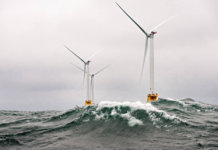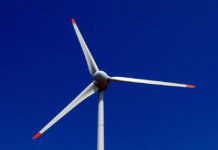Offshore wind farms located in the North Sea have hardly any negative effects on fauna, according to research conducted at the Wageningen University and Research Center (Wageningen UR) in the Netherlands.
In fact, the research shows that wind farms can provide a new natural habitat for organisms living on the seabed such as mussels, anemones and crabs, thereby contributing to increased biodiversity.
The team of researchers conducted the work at the Egmond aan Zee (OWEZ) wind farm in the North Sea and focused on the short-term ecological effects on benthic organisms, fish, birds and marine mammals.
The research performed within the OWEZ wind farm revealed minimal negative effects during the first few years on the benthic organisms in the sandy areas between the wind turbines. In fact, new species established themselves; communities of animals gathered on the wind turbine piles and the rocks piled around the columns, leading to a local increase in biodiversity.
The fish fauna are variable, and some minor positive effects have been observed so far. For example, the wind farm seems to provide shelter to cod. Porpoises were also heard more often inside the wind farm than outside it.
After the construction of a wind farm, during which the driving of piles into the seabed can have a disruptive influence, potential effects were expected from the presence of a new, hard substrate in the form of piles and protective rocks. Effects might also result from the presence of rotating wind turbine blades, possible underwater noise and the absence of other human activities such as commercial fishing, according to the researchers.
Overall, the OWEZ wind farm functions as a new habitat, with more species of benthic organisms and an increased use of the area by fish, marine mammals and some bird species, according to researchers.
On the basis of comparisons to results found elsewhere, the scientists conclude that the impact of a wind farm depends on its location and the depth of the surrounding sea.
The location of the OWEZ wind farm is favorable due to the relatively low number of birds that fly through the area at this distance from the coast. The presence of various habitat types and the intensity with which the area is used by others also play a role.
The research was funded by NoordzeeWind, a joint venture of Nuon and Shell Wind Energy, and was carried out by a consortium consisting of IMARES, Koninklijk NIOZ and Bureau Waardenburg.



